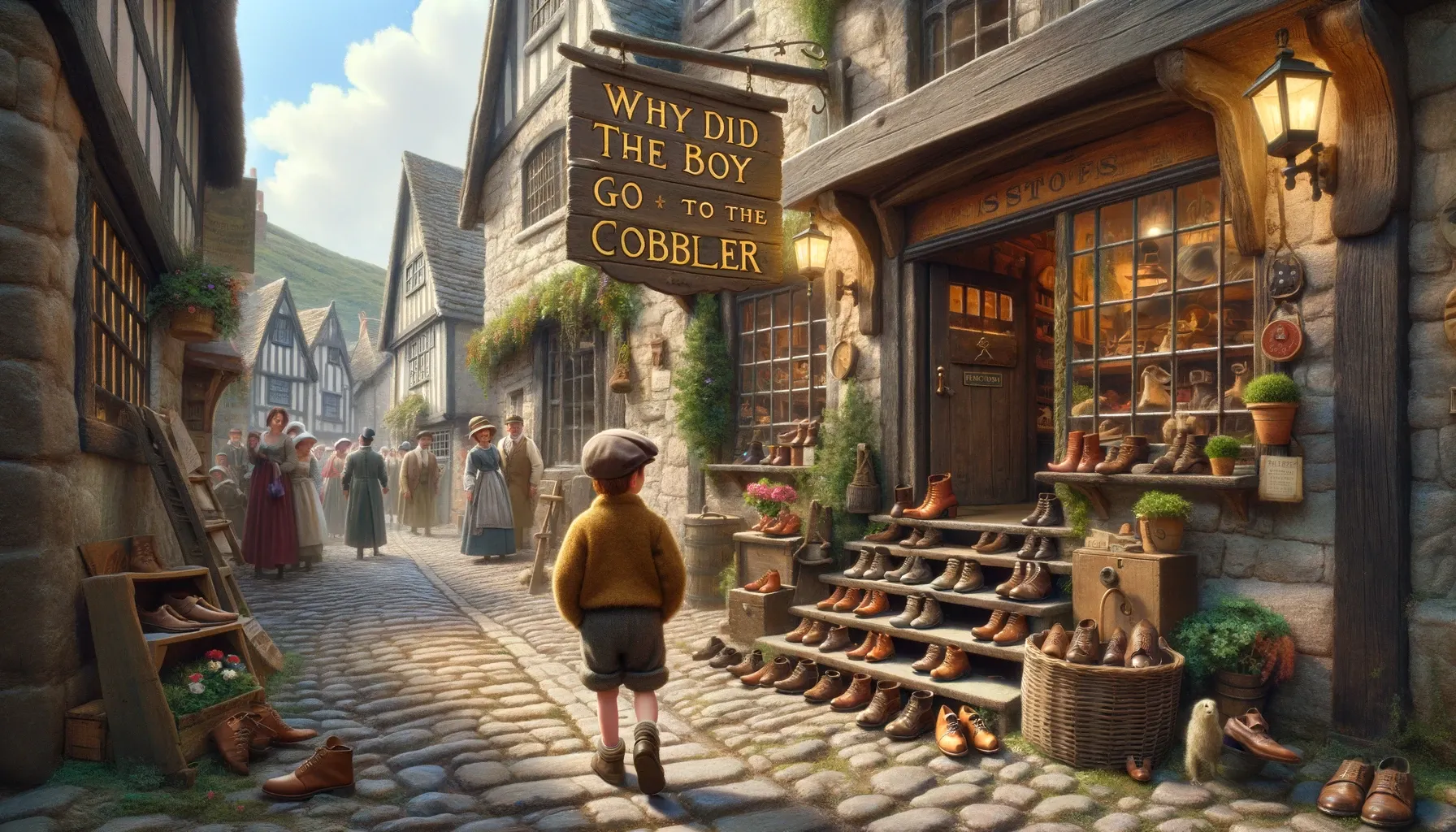Table of Contents
In a world where every visit and every question can lead to a journey of discovery, the simple inquiry, “Why did the boy go to the cobbler?” opens the door to tales of craftsmanship, learning, and the timeless value of repair over replacement. This story not only answers a question but also weaves through the essence of curiosity and the importance of sustaining traditional skills in the modern world.
Why Did the Boy Go to the Cobbler?

The boy went to the cobbler to mend his shoe. In the nursery rhyme “Cobbler, Cobbler,” the boy’s shoe got torn at the top and bottom, so he requested the cobbler to stitch it up and down. He left his shoe at the cobbler’s shop, returned at the agreed time, and was happy to find his mended shoe, which he then paid for as promised.
The Timeless Craft of Cobbling
The Role of a Cobbler
Cobblers have been an essential part of society for centuries, preserving the life of footwear and, by extension, supporting the sustainability of our resources. The boy’s journey to the cobbler symbolizes a step towards understanding the value of mending and maintaining what we own.
Sustainability and Craftsmanship
In our modern throwaway culture, the practice of repairing footwear presents a counter-narrative focusing on sustainability. Cobblers embody the meticulous craftsmanship required to breathe new life into worn-out shoes, demonstrating that quality and durability are worth investing in.
Read also: Operational Period Briefing
The Boy’s Journey: A Tale of Curiosity and Learning
The Initial Question
Why would a boy, in an age dominated by disposable goods, seek out a cobbler? The answer lies in the curiosity to explore beyond the surface, to learn about the artistry behind the repair, and to understand the value of extending the life of a beloved pair of shoes.
A Lesson in Value and Responsibility
The boy’s visit to the cobbler becomes more than just an errand; it transforms into a lesson in responsibility and the importance of valuing possessions. It’s a hands-on experience in the economics of repair versus replacement, underscoring the environmental and financial benefits of choosing to repair.
The Cobbler’s Wisdom: More Than Just Repair
Teaching Through Action
Cobblers, with their detailed knowledge and skilled hands, do more than repair shoes; they impart wisdom about the importance of quality, care, and the environmental impact of our choices. The boy’s encounter with the cobbler serves as an educational moment, emphasizing the broader implications of our daily decisions.
A Message for the Future
The cobbler, through his work, sends a message to the younger generation about the significance of preserving traditional skills and choosing sustainable practices. This interaction highlights the potential for traditional crafts to inspire a more thoughtful and environmentally conscious approach to consumption.
Final Words: The Answer and Beyond
So, why did the boy go to the cobbler? The answer is simple to restore a couple of footwear, yes, but also to embark on an adventure of discovery approximately the value of expertise, the importance of sustainability, and the instructions of responsibility. This tale, rooted in a simple query, exhibits deeper truths approximately the effect of our picks and the long-lasting significance of age-antique trades in our cutting-edge lives.
People also ask
Why did the boy go to the cobbler?
The boy went to the cobbler to get his shoes fixed or adjusted.
Why are the cobbler and the boy not weary?
Both find joy and fulfillment in their work and interaction, keeping weariness at bay.
What is the job of a cobbler?
A cobbler repairs shoes, restoring them to a wearable condition.
What has happened to the boy in the poem?
The poem implies the boy learns or experiences something significant, possibly growth or understanding, through his visit.




